Last updated: May 2025
Best Mattresses For Back Pain
Discover the best mattresses for back pain and how to relieve symptoms.
Mattresses play a huge part in back pain - the right mattress can alleviate symptoms, but the wrong mattress can make it much, much worse. According to figures released by the NHS, back pain is the largest single cause of disability in the UK, affecting around 30% of the population at any one time. Of those sufferers, around 11% are considered to be disabled as a direct result of the pain they are experiencing. Broadly speaking, back pain can be broken down into three different types:
- Acute back pain: This is defined as short-term pain, although it can last anywhere between one day and up to one month. Typically, this level of back pain is usually attributed to a strain or injury.
- Subacute back pain: This is defined as pain that lasts between one and three months. In this case, a doctor’s appointment is recommended, to see whether the condition will heal naturally or require treatment. Left unchecked, subacute back pain can become chronic back pain.
- Chronic back pain: This is defined as pain that lasts three months or longer. It can present as a constant ache, a series of painful episodes, or a severe stabbing sensation. A doctor’s appointment is recommended as, if left untreated, chronic back pain can develop into a disability.
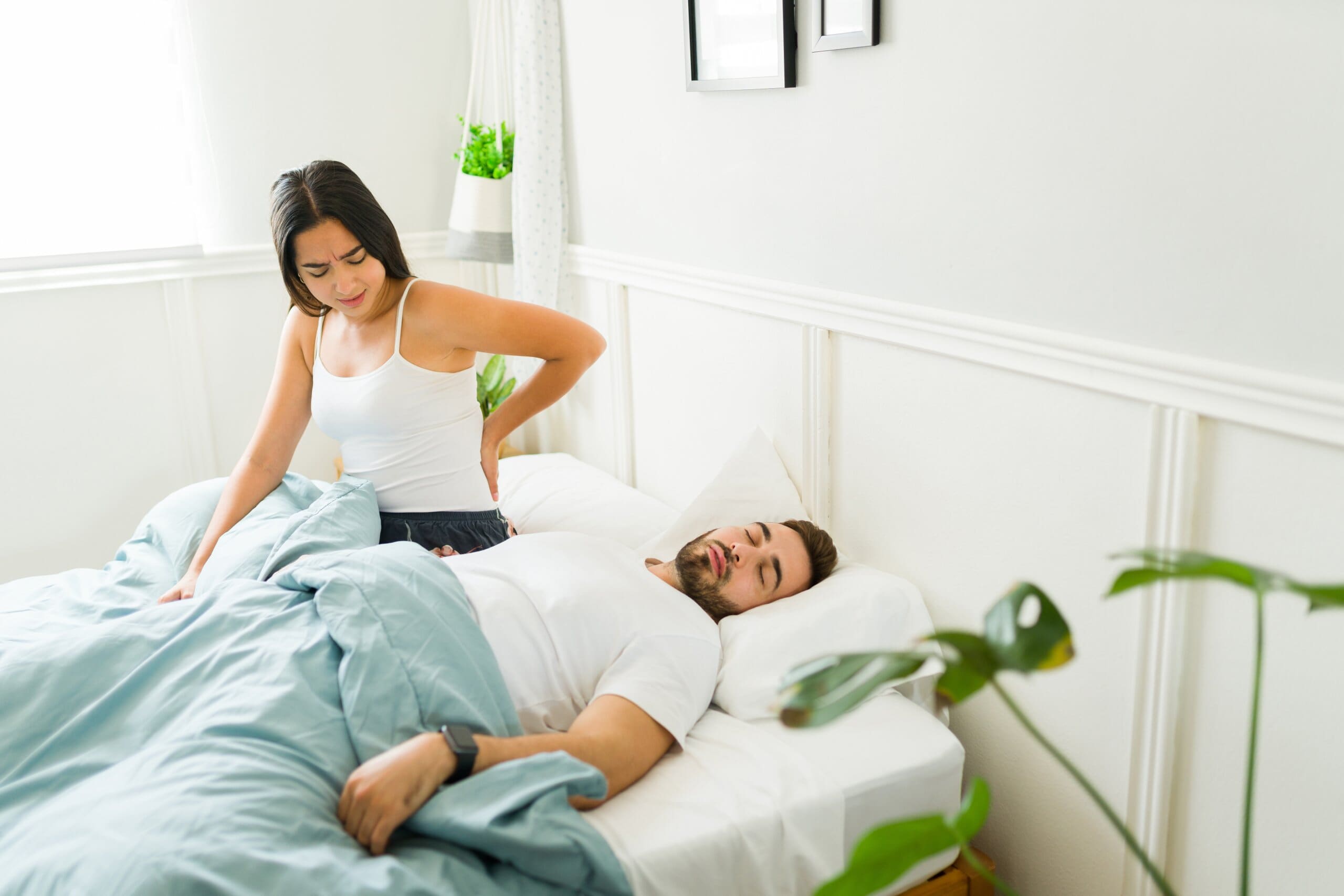
While strains and injury are some of the most common causes of back pain, there are others. Causes can include:
- Osteoarthritis: this is the degeneration of bone and cartilage, which can lead to restricted mobility and pain. Our guide to the best mattress for arthritis might be useful for you in this case.
- Herniated discs: this occurs when one or more of the cushioning discs between the vertebrae are dislodged. This can result in limited movement and severe pain.
- Pinched nerves: this can occur when too much pressure is placed on nerves, usually by surrounding bones, muscles, and cartilage. This can result in constant pain and reduced mobility.
- Spondylitis: this is defined as an inflammation of the vertebrae and, if left unchecked, can result in a curvature of the spine. Pain levels experienced as a result of this condition are significant.
- Sciatica: this is usually caused by pressure on the sciatic nerve, typically as the result of a herniated or slipped disc. The pain is acute and usually experienced from the waist down, through the legs, and into the feet.
What are the best mattresses for back problems?
Ultimately, personal preference will play a huge part in which mattress you choose. However, when it comes to trying to combat back pain, it’s worth remembering that a mattress that’s too soft will not offer the support your spine needs and can make the problem worse. A new mattress, bought with considerations for your spinal health in mind, can help to mitigate night-time back pain and, in some cases, help to improve the condition. Orthopaedic mattresses are well known to be great for helping alleviate symptoms of a bad back, and are designed with spinal health in mind. However, everyone is different, and your sleeping position may impact how well your back reacts to an orthopaedic mattress. So which is the best mattress for a bad back?
What are the different types of mattresses for back pain?
Pocket sprung
Pocket sprung mattresses contain springs, each individually housed in a fabric pocket. This allows each spring to move independently and fit the contours of the body. This provides optimum support and comfort, just where it’s needed. These are likely to offer greater benefit to sleepers of a heavier build, with the springs becoming more reactive according to the pressure placed on them. They also help to take the weight off pressure points, such as the hips, knees, ankles, and shoulders, keeping them in alignment with the spine. Most orthopaedic mattresses utilise pocket springs, as they're great for creating a firmer mattress that keeps your body aligned and supported.
Latex
Latex mattresses can be a great choice for those suffering from long-term back pain. Responsive and breathable, they mould to the contours of your body, even when you change position. This allows the provision of support while delivering personalised levels of comfort. Latex mattresses are available in a range of densities, allowing you to select the one that’s best for your size, weight, and build. The amazing thing about latex mattresses is that they highly breathable, preventing overheating.
Memory foam
Memory foam mattresses are widely hailed as the best type of mattress for lower back pain. As with latex, they support the contours of the body and provide comfortable reinforcement to the pressure points from key areas such as the lower back, hips, shoulders and neck. Conditions such as sciatica can be aggravated by excessive pressure. So for neuralgic conditions, a memory foam mattress is a good option.
However, as with latex, these mattresses come in a variety of densities, so be sure to choose the one that’s right for your size, and weight. An alternative is to buy a memory foam topper and put it on top of a pocket-sprung mattress, for extra support and comfort. For more information, read our guide to memory foam thickness and density.
However, some conditions can be made worse by an adaptive mattress. So, memory foam on its own may not work for everyone. If you love that ‘sinking into bed’ feeling but still need additional support, a memory foam mattress topper on a firm mattress will give you the best of both worlds.
You may also need to consider how you sleep. If you suffer from back pain and sleep on your side, memory foam will give you the cushioned support you need to keep your spine in a neutral position. If you sleep on your stomach, a memory foam mattress will not provide the firmness you need to stop your back from 'arching'. This could lead to additional pain. If you sleep on your back, you may also require additional support. Again, a combination of a memory foam mattress topper and a firm or extra-firm base mattress will work best.
Adjustable bed mattresses
Adjustable beds and their accompanying adjustable bed mattresses can be a game-changer if you suffer from long-term back pain. By allowing you to adjust position without putting strain on your spine or joints, this type of mattress helps you get into the best position for relieving pain.
Lying flat isn't always the best position for easing back pain, and sometimes you need to sit up slightly to relieve pressure. An adjustable mattress and bed can help you do this with a simple press of a button, and you can even discover the famous 'zero gravity position' by slightly raising your head and feet for a weightless feel that seriously eases aches and pains. Slightly raising your legs can also encourage circulation, and you won't have to put undue strain on your body when getting in and out of bed either.
Our top mattresses for back pain
The impact of back pain on an individual cannot be underestimated. At best it can be a constant ache, and, at worst, it can result in limited mobility and chronic pain. Getting a good night’s sleep is crucial to the healing process and your overall well-being.
Here are our top five recommendations for mattresses for back pain.
Tuft & Springs™ Ortho Brilliance 2000 Mattress
From the makers of luxury mattresses, the Tuft & Springs™ Ortho Brilliance 2000 Mattress features layers of silk, wool, cotton and cashmere to cushion your body and provide expert pressure relief. With a firm tension, this orthopaedic mattress keeps your spine supported and aligned, especially if you tend to sleep on your back.
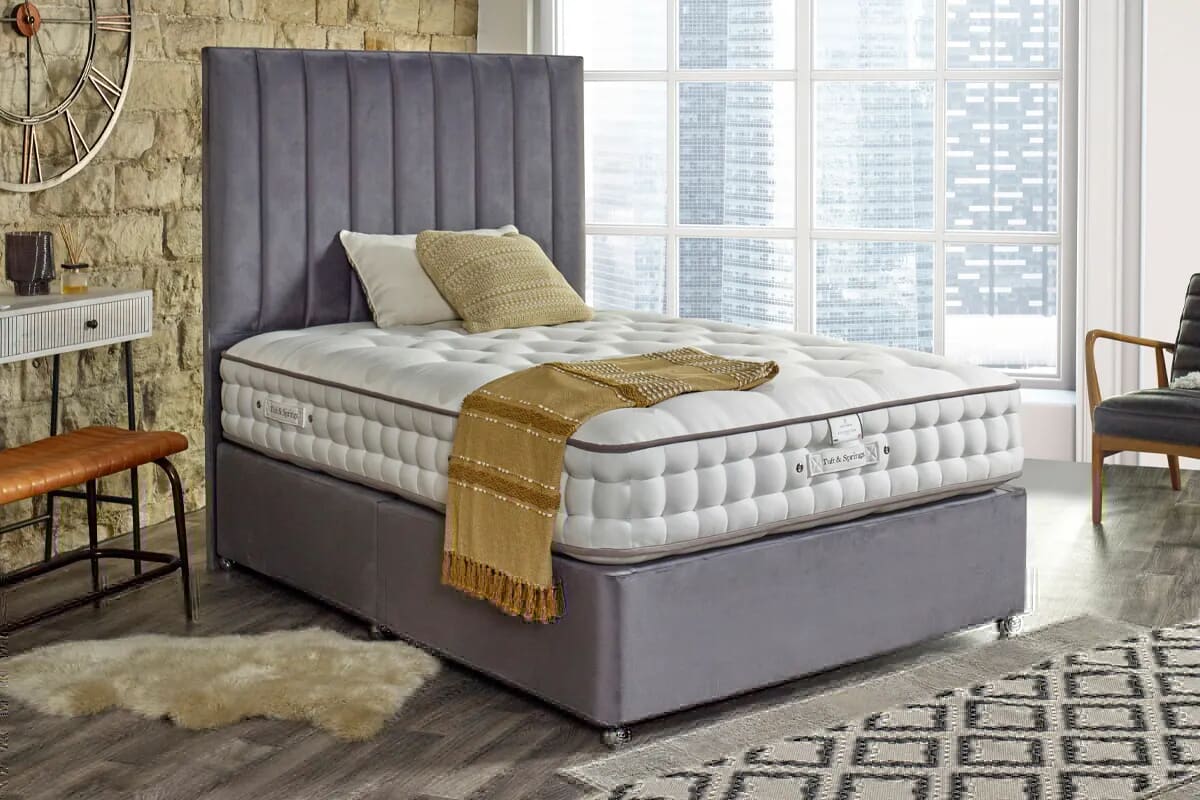
SleepSoul Space 2000 Pocket Memory Pillow Top Mattress
Combining all the support of pocket springs with the contouring comfort of memory foam, this mattress is topped with a pillow top for extra 'snuggleabilty'. Up to 2000 individually pocketed springs form a core, with a memory foam top layer. With a medium firmness rating, it offers orthopaedic support, helping to keep you in the healthiest sleeping posture.
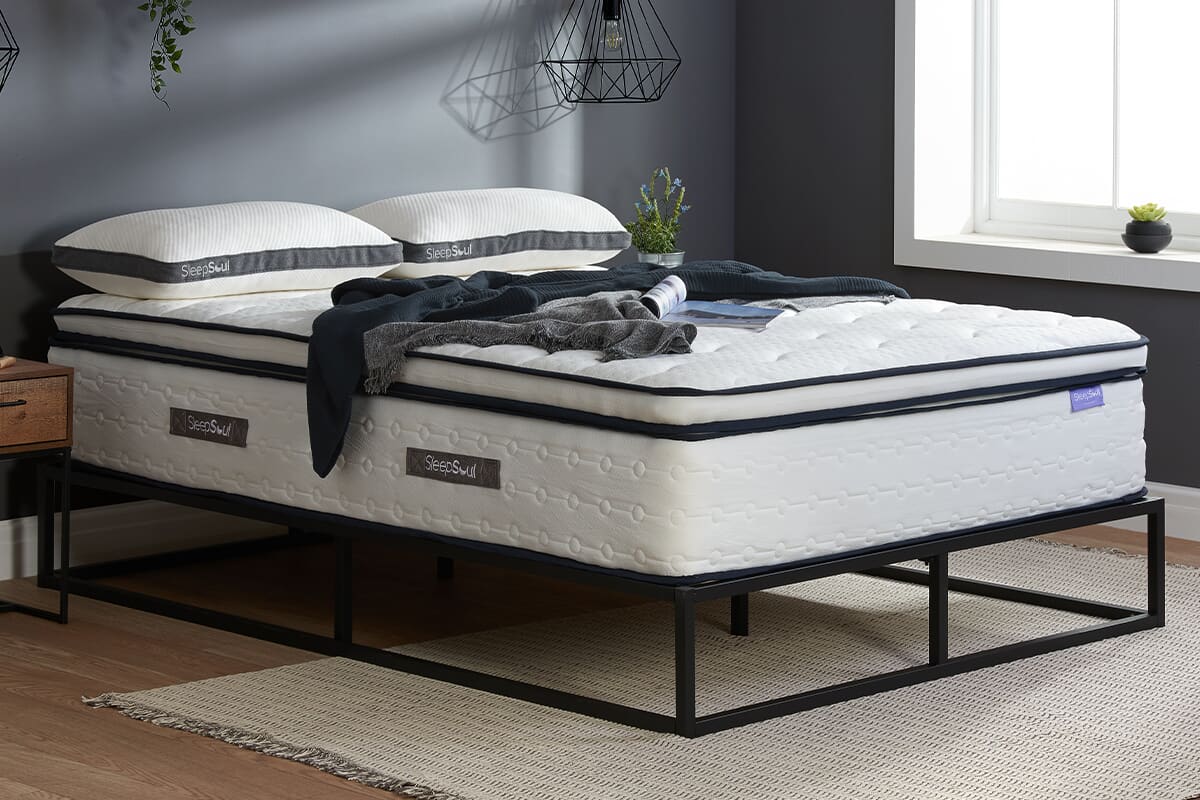
Harrison Spinks Canterbury 4450 Mattress
From the creators of gorgeously natural mattresses, the Canterbury 4450 from Harrison Spinks oozes luxury. With up to an incredible 4450 Cortec™ pocket springs, this medium firm mattress adjusts to your needs as you move, and is plumped with wool, cotton, flax, and specialist Ecotex® fibres for gentle cushioning. Additional Micro posture springs ensure maximum support to your back, no matter which sleeping position you prefer.
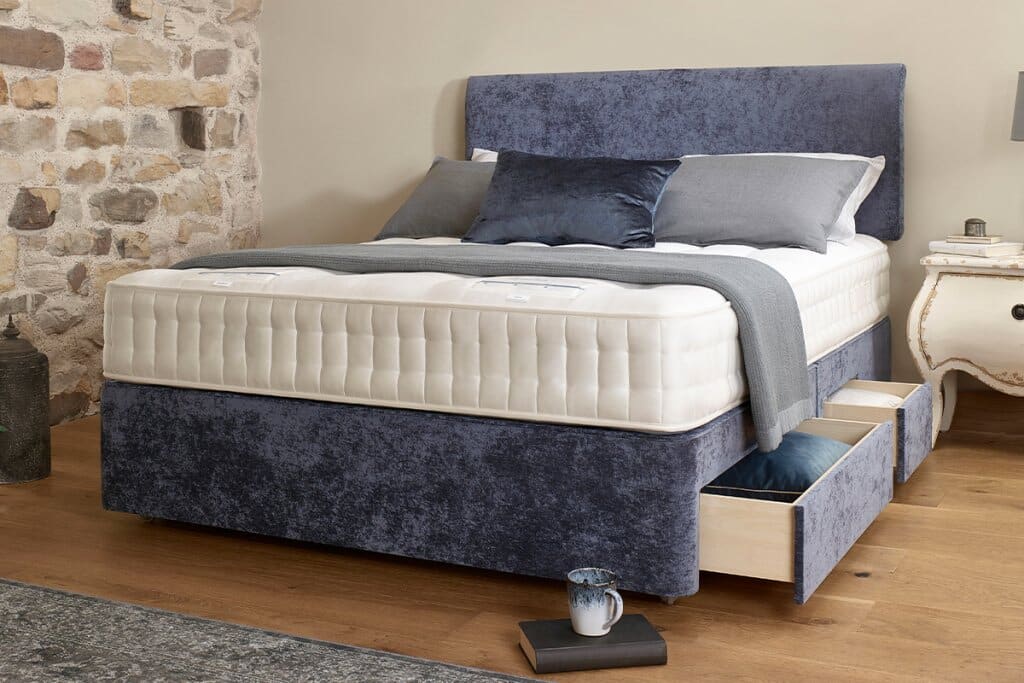
Coolflex® Lux Ortho Pocket Mattress
Specifically designed and engineered with your spinal health in mind, this mattress features orthopaedic pocket springs and high-density reflex foam. This firmer foam material moulds to your unique body shape, offering full body support and promoting blood flow to inflamed or painful areas of your back. This mattress tackles both the causes and symptoms of back ache, offering expert pressure and pain relief and helping you find an ideal sleeping position for posture.
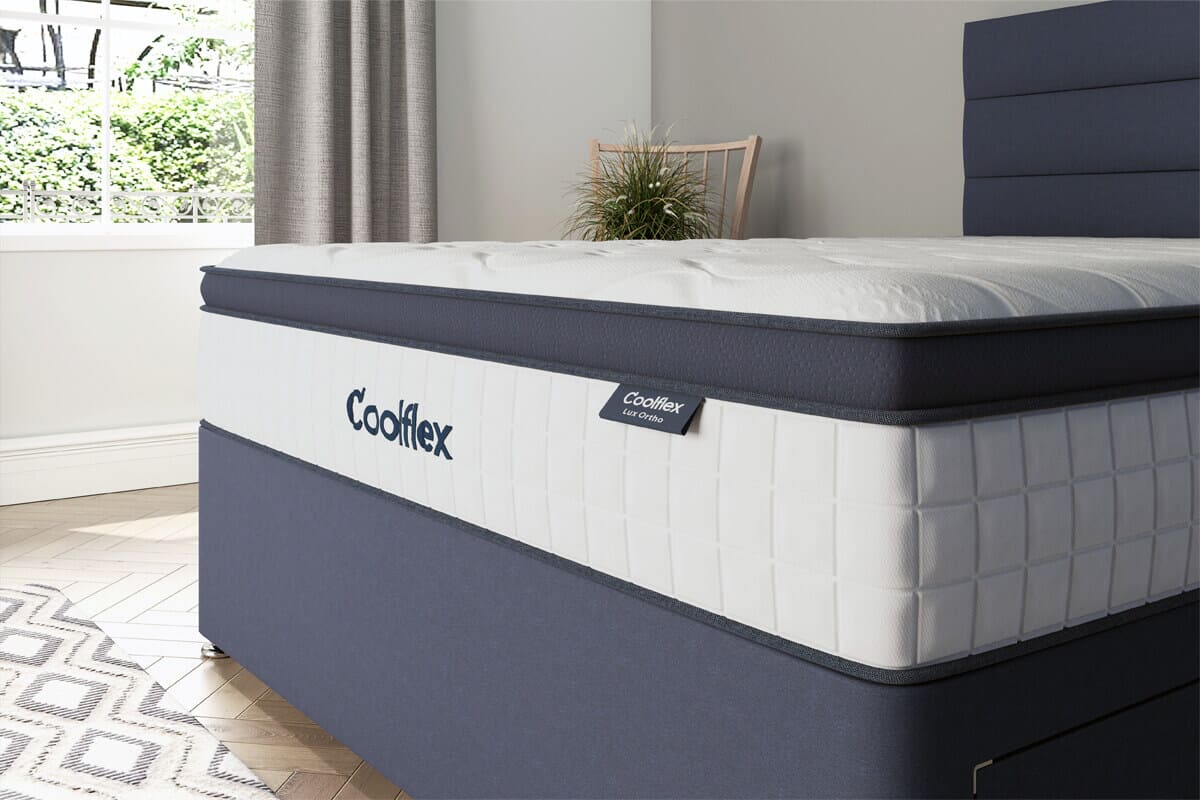
Spring King Backcare Ultimate 3000 Mattress
The aptly named Spring King Backcare Ultimate 3000 Mattress really does have your back health in mind. Extra firm, this mattress is for those who suffer from chronic back pain, offering specialised support with the help of super firm pocket springs. These springs keep your body - while you lay on your back - nicely aligned, with targeted support in zoned areas across the surface of the mattress.
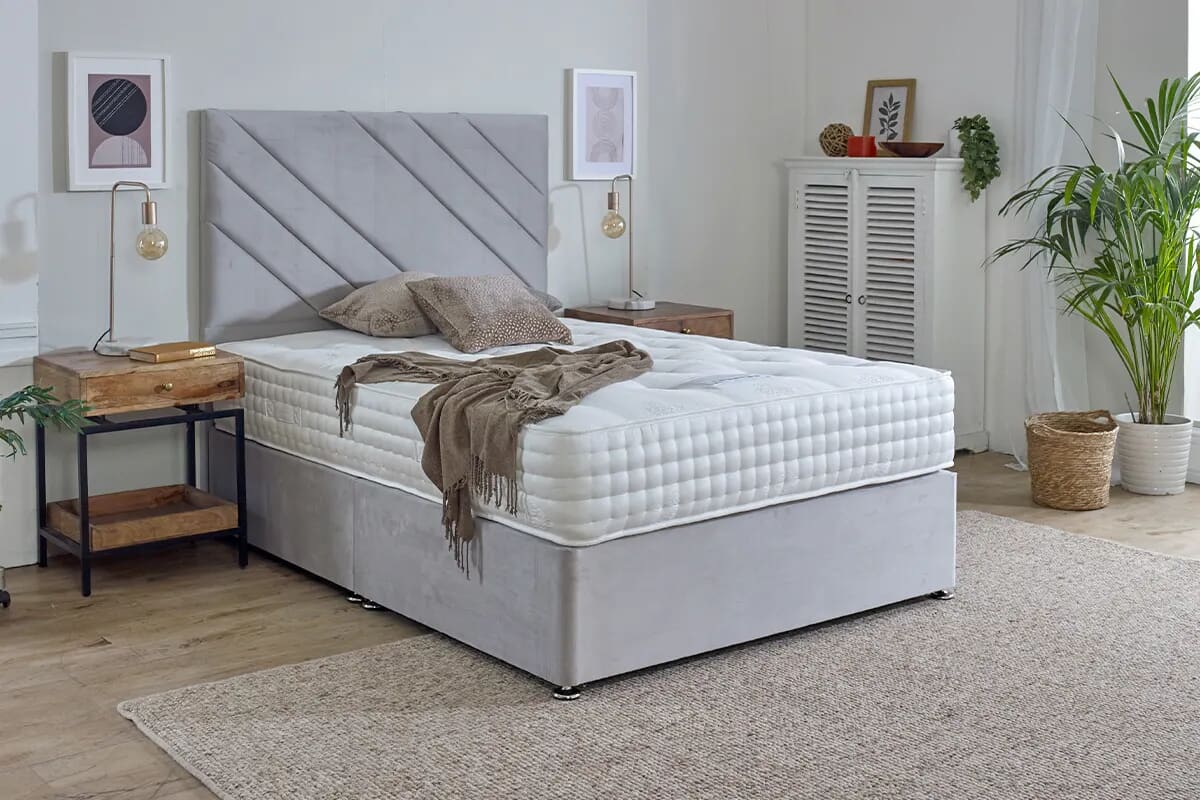
What mattress firmness is best for back pain?
It depends on several factors, including the type of pain you suffer from, how you sleep, and your weight and size. A firm or extra-firm mattress may be too hard, as they're generally for specialised support, recommended by a medical professional. This could cause more back pain if you're lighter, as your body won't be able to 'dip' into the surface at all.
If you're heavier, a softer mattress may feel lovely and snuggly for the first ten minutes. But you'll find that it doesn't give you the support you need to prevent back pain.
Firmer mattresses tend to be recommended, as they help to disperse the body’s weight equally, taking the strain off important areas such as the neck and the base of the spine. For those who need higher levels of support and comfort, orthopaedic mattresses can be a superb option. These are available in a range of styles and with a variety of fillings, allowing you to choose the best mattress firmness for back pain, as well as the cushioning that’s best for you.
For more advice on choosing the best mattress firmness for you and your back, read our Mattress Firmness Guide.
| Mattress firmness | Characteristics | Weight |
| Soft | Plenty of surface sink and moulds to the shape of the body. Suitable for lighter users such as children and side sleepers | Up to 130lbs (9-9½ stone) |
| Medium-soft | Less surface sink. Conforms to the shape of the body. Suitable for lighter sleepers who require a little more support. Ideal for children | 130lbs (9-9½ stone) to 230lbs (16½ stone) |
| Medium | Little surface sink. An excellent all-round level of support for most average-weight users and side-sleepers | 130lbs (9-9½ stone) to 230lbs (16½ stone) |
| Medium-firm | Very little surface sink. Firmer feel and greater bounce-back. Conforms to a certain amount with the shape of the body. Suitable for average-weight users | 130lbs (9-9½ stone) to 230lbs (16½ stone) |
| Firm | A firm surface that does not conform or sink. Suitable for larger or heavier users, front sleepers | 230lbs (16½ stone) and above |
| Extra Firm | No surface sink at all. Very firm and suitable for heavier users, front sleepers, and those who prefer a much firmer feel | 230lbs (16½ stone) and above |
For tips on choosing a mattress for your sleeping position, such as the best mattress for front sleepers, head to our Buying Guide section.
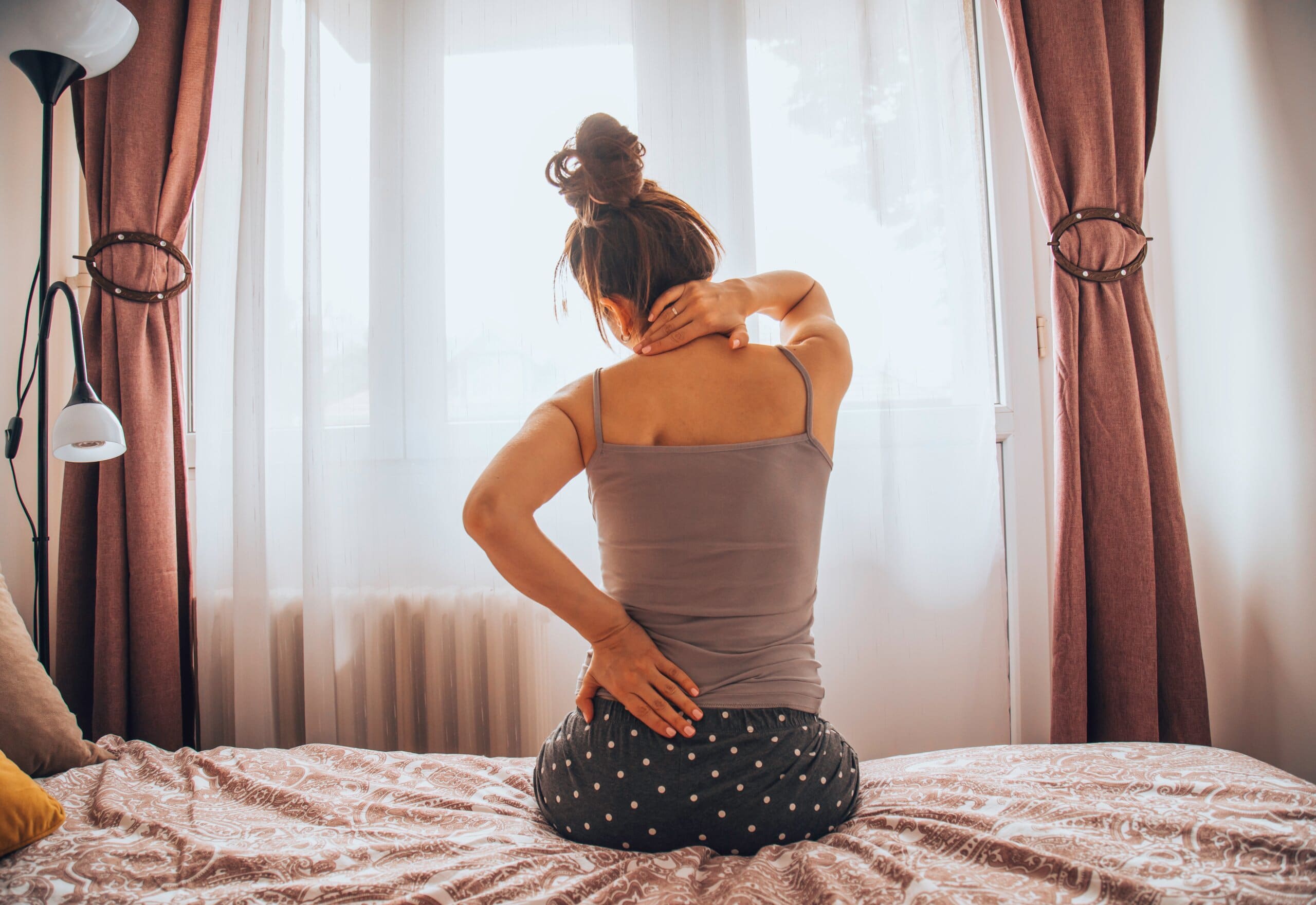
Top tips for relieving back pain
While there are many causes of back pain, prevention is always better than cure. Here’s a brief overview of things you can do at home for both the prevention or treatment of back pain.
1. Exercise
Professor Stuart McGill from Waterloo University says that the best approach is to “spare the spine. Enhance the muscle challenge, and enhance the motor control system to ensure that spine stability is maintained in all other activities.” He recommends three exercises: the bird dog, the side bridge, and a version of the curl-up.
2. Good posture
Making a conscious effort to keep your spine aligned, whether you’re standing, sitting, or lying down, can have a positive impact on back pain. Poor habits such as slouching, hunching over your workstation, and even wearing high-heeled shoes can all point the way towards back problems. Keep your neck, spine, hips, and knees in alignment to ensure that all pressure is spread equally through the bones, muscles, and cartilage.
3. Buy a new mattress
A mattress that’s sagging, lumpy, too hard, or too soft, can increase the likelihood of back pain. If your mattress is past its sell-by date (usually around eight years), then it could well be time to invest in a new one and protect your spine. A mattress that offers inadequate support, combined with poor sleeping positions, can lead the vertebrae to put pressure on the sciatic nerve which, in turn, can cause lower back pain. A good-quality mattress can support the natural curve of the spine, during periods of inactivity.
4. Use temperature therapy
Using ice packs and hot water bottles can help alleviate back pain. It’s thought that, for the first week, sufferers may benefit from applying ice packs, wrapped in a towel, for around 20 minutes each day. This helps to reduce painful inflammation. The second week sees the ice pack swapped for a hot water bottle. The heat relaxes blood vessels in the affected area, allowing healing hormones easier access with the increased blood flow. This is also why cool gel mattresses can help alleviate pain in certain areas.
5. Talk to your GP
If the pain is too much to bear, or lasts longer than a few days, consulting your GP is the best course of action. They may recommend a course of medication and pain relief, refer you to a specialist, or be able to give you a series of beneficial exercises to follow.
If you need more helping choosing the best type of mattress for you, check out our Mattress Buying Guide. Or, you can take our award-winning, quick and easy MattressFinder™ quiz to pair you with your dream bed.

